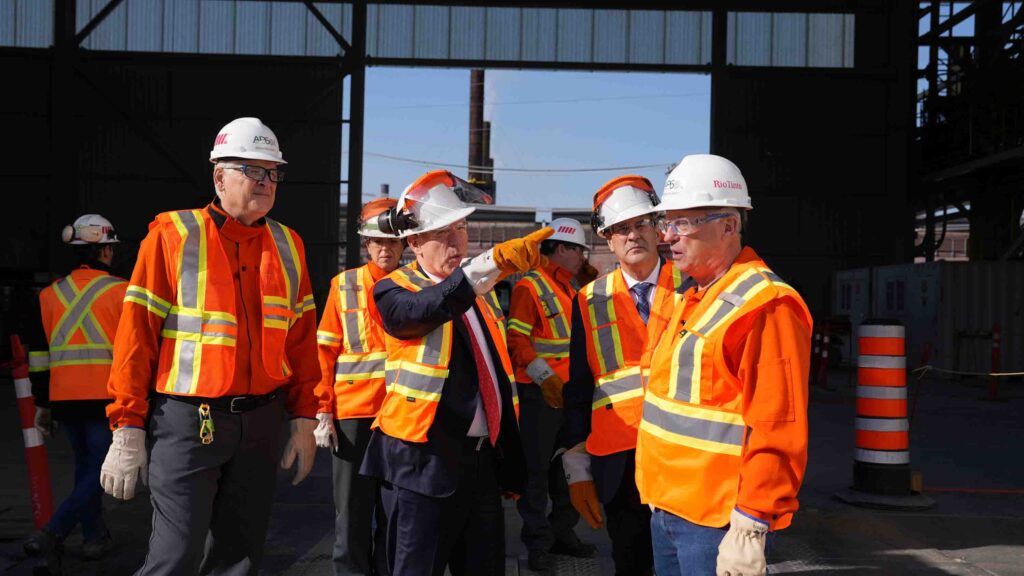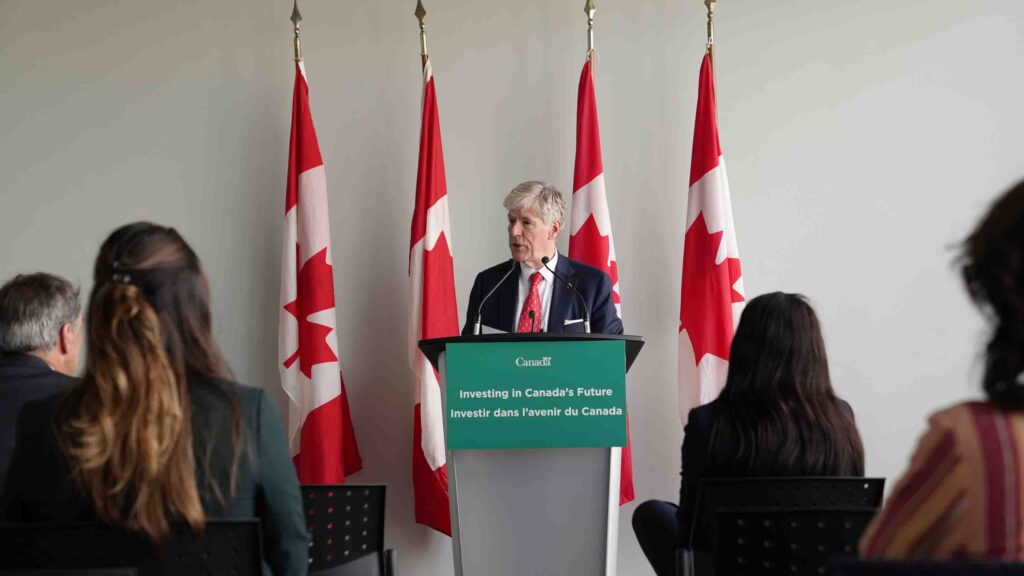Ottawa hopes to attract $500 billion in private investment through nationwide program
Federal Minister of Energy and Natural Resources Tim Hodgson made stops in several Quebec regions recently while on a whirlwind tour of the province to announce Ottawa’s support for key industries expected to play a part in the massive “Build Canada” program the government has launched to boost economic growth following U.S. president Donald Trump’s imposition of crippling tariffs.
Opportunity knocks
“We’re here learning about the different opportunities,” Hodgson said in an exclusive interview with Newsfirst Multmedia while in Chicoutimi to announce a $735,000 subsidy to a phosphate mining company that is expected to help build reliable critical minerals supply chains in Canada.

“I just met with many of the mayors and business leaders in the Saguenay area and heard about what their aspirations and desires are and some of the opportunities here in critical minerals and in clean and conventional energy,” he said. “And it’s a very promising place.”
While in Montreal recently, Hodgson announced an investment by the Liberal government of over $22 million in support of eight projects to accelerate battery innovation and production capacity across Canada.
If commercialized, Arianne Phosphate’s project could establish a source of Canadian phosphorus, a key ingredient in lithium-iron-phosphate batteries.
Battery production growth
Hodgson’s ministry anticipates that the global cumulative battery demand from 2022 to 2050 is set to increase nearly 150-fold, providing an important opportunity for Canadian battery manufacturers. Phosphoric acid is also essential for fertilizers and other specialty products.
The subsidies, according to Hodgson, underscore the beginning of the Carney government’s massive Build Canada program.
It’s all about “getting educated,” the former CEO of Goldman Sachs Canada said. “Each region and each set of folks are wanting me to understand the opportunities in their regions. And as they think about what they’d like to see happen, I educate myself.”
Perhaps not since the Great Depression has the Canadian federal government undertaken such a massive, nationwide economic rebuilding program as Build Canada. Hodgson acknowledged that indeed “the Prime Minister has been talking for quite some time about how this is really a hinge moment.”
Rules changed by Trump
He recalled that after World War II, the major world powers signed the Bretton Woods Agreement, establishing a new global system of monetary and free trade management. That lasted up until recently when the U.S. under Trump decided it no longer wanted to do business that way.
“They no longer believe in free trade,” Hodgson said. “It’s no longer a free trading multilateral world. It’s becoming much more of an America-first or what, you know, you would call in economic terms a mercantilist world, where you design everything for the benefit of one country, if that is the world we find ourselves in. And again, we did not ask for this trade war. We were happy with the way it was working.”
The upshot, according to Hodgson, is that “we need to retool, we need to reorganize. And the Build Canada Act and the Major Projects Office are a critical part of the retooling of our economy.”

Attracting private investment
Through Build Canada, the federal government hopes to attract $500 billion in new private sector investment into Canada over a five-year span. The government’s own investment would be minimal, according to Hodgson, with one of the goals being to “not spend government dollars,” he said.
“There may be situations where we provide some incentives to attract those private sector dollars, okay. But our job as government is to spend as little as possible taxpayer dollars in the most responsible way we can to attract many, many multiples of private sector money.”
Hodgson anticipates that the government will be able to attract an initial $60 billion during the first phase of Build Canada.
With that said, and given the volatile nature of the current situation in the U.S. where new tariffs decreed by Trump are often rising and falling from week to week, Newsfirst Multimedia asked Hodgson how the Canadian government can react effectively with a program like Build Canada when the rules are changing constantly.
U.S. beyond Canada’s control
“What the Prime Minister has said is we cannot control what others are going to do – we simply cannot,” he said. “The Americans are going to do what the Americans are going to do.
“What we need to do is to focus on what we can control so that the things that we can control are how we trade with each other within this country,” he continued. “So, reduce the trade barriers between provinces. That, and then reducing the regulation and creating the incentives to attract private sector money.
“If we do that and we attract the $500 billion of new investment to Canada, we will create the jobs and the revenue streams that insulate us from, shall I say, the inconsistent policies of our neighbors.”



